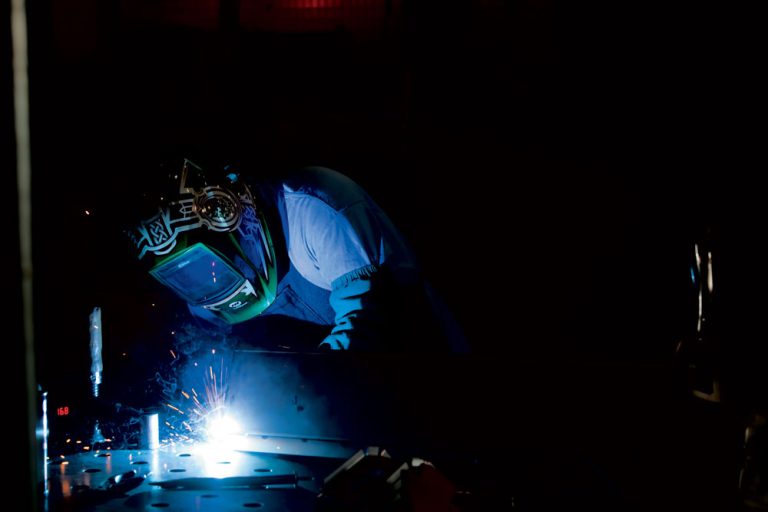Manufacturing in Greater Baltimore MD: The Next Tech Frontier
Discover why manufacturing remains a key element of the economy in Greater Baltimore, Md., where nearly 1,700 manufacturers like Black & Decker Stanley and DAP employ more than 57,000 workers.

Manufacturing is a key element of the economy in Greater Baltimore, where nearly 1,700 manufacturers employ more than 57,000 workers. But this is not your grandfather’s factory floor. The sounds of rivets and hammers have been replaced by the tapping of keyboards and the hum of 3-D printers. Greater Baltimore’s manufacturers are leading the nation’s transition to next-generation, technologically sophisticated production.
In fact, the largest manufacturing industries in the region are high-tech specialties, such as the computer and electronics cluster. Growing numbers of manufacturers are eliminating the assembly line and replacing it with 3-D printing, also known as additive manufacturing (3DP/AM), allowing them to engage in rapid prototyping and innovation. These nimble enterprises are able to expedite design, production and delivery of products across a range of industries.
“It’s a fascinating technology, growing and refining at warp speed,” says Karen Holt, director of the Harford County Office of Economic Development. Her office houses a regional additive manufacturing authority, RAMP-MD, whose pioneering technologies have leveraged federal 3-D labs at the Aberdeen Proving Ground and other federal labs to promote emerging business technologies and manufacturing growth in northeast Maryland.
Tomorrow’s Jobs Today
By taking a leadership role in 3DP/AM, the region’s manufacturers are building more than prototypes and products. They are creating the jobs of tomorrow. Leadership in the development of the 3-D printing industry will aid Maryland’s efforts to help bring manufacturing jobs back to the U.S. and spark economic growth. The flexibility of 3DP/AM companies is generating jobs in the state, says Jan Baum, executive director of 3D Maryland, an initiative of the Howard County Economic Development Authority and the Maryland Center for Entrepreneurship designed to increase engagement between 3-D printing and additive manufacturing and regional businesses, industry, and entrepreneurs. 3D Maryland also operates the Innovation and Prototyping Lab in Columbia, which is open to business, industry and entrepreneurs. 3DP/AM fosters new, innovative businesses, whether hybrid manufacturers such as UAV Solutions or consumer products company M-Edge, Baum says. 3DP/AM strengthens the supply chain as small businesses develop niche expertise supplying unique services to our larger manufacturers such as Repliform and Alio Designs, she says.
“There is much business development coming down the pike. This is just getting started. These technologies are also attracting investment dollars to Maryland. We have seen investment in new innovative companies in our innovation and entrepreneurial ecosystem as well as in existing manufacturers upping their game. Businesses are looking to relocate to Maryland because of our commitment to these advanced manufacturing technologies,” Baum says.
The 3D Maryland Innovation and Prototyping Lab has produced prototypes of motor mounts, camera shrouds, medical devices, consumer goods and other products. In its first eight months, it served more than 75 clients producing more than 200 3-D printed parts, Baum says. Baltimore architecture and design firm Ayers Saint Gross has been working with 3-D technologies for more than 11 years. Building Information Modeling (BIM) allows the firm to virtually construct a building and systems before physically building the structure.
“The cost savings to design and build through this process have more than justified our investment in the technologies, and I believe we are building smarter and more efficiently than we ever have,” says senior associate Brian Russell. 3-D printing takes computer modeling even further for designers, he says. “We are using 3-D printing technologies to produce physical models that not only help us convey our design intent but also allow us to do design analysis. I see a day coming very soon when we will be prototyping and 3-D printing different parts of our buildings,” Russell says.
